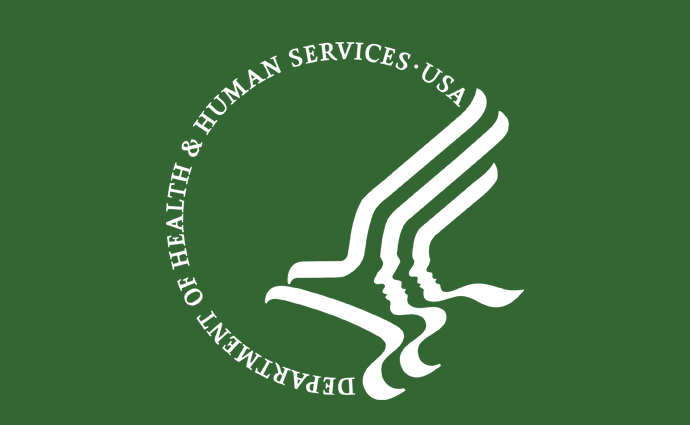Children’s Hospitals Get $1.4B in Coronavirus Relief Funds
HHS made another round of targeted coronavirus relief funds, with the most recent going to almost 80 freestanding children’s hospitals impacted by COVID-19.

Source: Department of Health & Human Services
- Children’s hospitals are finally getting a piece of the coronavirus relief fund pie.
HHS recently announced that the Health Resources and Services Administration (HRSA) has begun distributing $1.4 billion in Provider Relief Funds to nearly 80 freestanding children’s hospitals across the country.
For more coronavirus updates, visit our resource page, updated twice daily by Xtelligent Healthcare Media.
The hospitals will receive 2.5 percent of their net revenue from patient care and must be either exempt from the Inpatient Prospective Payment System or be an HRSA-defined Children’s Hospital Graduate Medical Education facility.
“Children’s hospitals have pitched in to our all-of-America COVID-19 response by providing backup capacity, extra supplies of PPE, and other support,” HHS Secretary Alex Azar said in an announcement. “Throughout the distribution of the Provider Relief Fund, we have sent these funds as quickly as we can to those who have been hardest hit by the virus, and this distribution recognizes the contributions of children’s hospitals helping to meet the challenges of this pandemic.”
READ MORE: Healthcare Revenue Cycle Recovery After the COVID-19 Pandemic
The targeted coronavirus relief funding will help to offset some COVID-19 financial losses but will not be enough to repair the damage the pandemic continues to inflict on the bottom line, according to the Children’s Hospital Association.
“The pandemic’s impact on children’s hospitals continues and its adverse effects on children’s health will be enduring, requiring ongoing mitigation through future relief. We look forward to working with both Congress and the administration as our country, and its children, works to recover from this crisis,” the Association said in a statement following the HHS announcement.
Children’s hospitals are expected to lose $10 billion by the end of 2020 as a result of the coronavirus, the Children’s Hospital Association projects.
Financial losses stemmed from dramatic volume reductions at the start of the pandemic when providers had to cancel all elective, non-emergent services to stop the spread of the deadly virus. For children’s hospitals, specifically, that translated to patient care revenue losses of 40 percent to 50 percent.
Children’s hospitals also had to purchase additional personal protective equipment, and many offered their capacity as back-up to other hospitals experiencing surges of COVID-19 patients requiring hospital beds, HHS also acknowledged in the announcement.
READ MORE: How COVID-19 Is Impacting the Healthcare Revenue Cycle
But prior to the targeted distribution of coronavirus relief funds, children’s hospitals only received less than 1 percent of the $175 billion in Provider Relief Fund earmarked for healthcare providers impacted by the pandemic.
Children's hospitals “have been overlooked and underfunded,” the Children’s Hospital Association stated.
In addition to implementing COVID-19 response efforts and suffering the financial consequences, most children’s hospitals also rely on Medicaid, the Association explained.
Medicaid generally covers between 50 percent and 75 percent of patients at children’s hospitals. This meant that children’s hospitals were largely left out of initial coronavirus relief distribution, which was based on Medicare revenues.
HHS later made $15 billion in Provider Relief Funds available to Medicaid providers, as well as those participating in CHIP, dental care providers, and certain Medicare providers who missed the initial general distribution.
READ MORE: Medicare Payments Top $2.8B for COVID-19 Hospitalizations, So Far
The federal department noted in the recent announcement that it is “committed to administering the Provider Relief Fund Program in a way that is fast, fair and transparent.”
“HHS will continue to maintain an open line of communication with providers as well as congressional, state and local leaders to ensure as many providers as possible receive some-level of funding in these difficult times,” the announcement stated.
So far, HHS has distributed nearly $120 billion in emergency relief from the Provider Relief Fund, including $50 billion in general distributions and over $50 billion in targeted distributions to hospitals in COVID-19 hot spots, rural providers, skilled nursing facility, and safety-net hospitals.
Health officials have also earmarked a portion of the $175 billion in the Fund for reimbursements to providers who treated uninsured COVID-19 patients.
However, hospitals are still calling for more money as financial losses continue to pile up. The American Hospital Association (AHA) recently projected hospitals to lose at least $323 billion through the end of 2020 because of coronavirus-related expenses.
The struggle to get emergency assistance from the government has been even more difficult for some specialty providers and those who do not accept a large number of Medicare patients.
The American Health Care Association and National Center for Assisted Living (AHCA/NCAL), for example, recently called on Congress to provide an additional $100 billion for the Provider Relief Fund and dedicate a “sizable portion” to nursing homes and assisted living communities.
“Overall nursing homes are making progress as data shows that new cases are down; however, the growing number of new COVID cases in states across the country is very concerning, which is why continued support… is vital to helping long term care facilities keep this virus out of our buildings,” stated Mark Parkinson, president and CEO of AHCA/NCAL.
The coronavirus pandemic is far from over and policymakers have promised to pass another coronavirus relief package to support individuals and businesses. But just how much financial support healthcare providers, particularly those treating vulnerable populations, will see in a possible package remains is unclear at this time.
